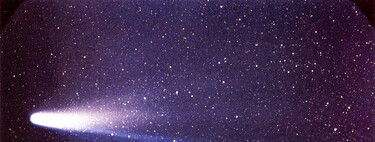No risk, no gain. It is already known: who never takes risks, never wins. The European Space Agency (ESA) has decided to apply this maxim and undertake a task that breaks with the rigid and strict planning that usually defines space exploration, traced to the millimeter to optimize costs. Against the usual logic, the European body has decided to launch a mission that will depart from Earth in a few years… without any precise objective.
Does that mean that it will be launched to the good of God? No way. Just because you don’t take off with a clear destination doesn’t mean you don’t have a clear intention. Comet Interceptor —as the mission has been baptized— will travel hundreds of thousands of kilometers to reach the second Lagrange point (L2) and, once there, wait for a comet that can tell us about the dawn of the Solar System.
As the magazine explains Naturehis peculiar mission will consist neither more nor less than “ambush” to a goal yet to be defined. In a way, his task is similar to that of a fisherman who leaves home one morning with a rod on his shoulder. He may come back with a big, juicy trout. Or that he does it empty-handed. Therein lies the risk. And the prize, of course.
A long wait of years

The mission was selected three years ago, but has just now received the go-ahead from ESA. The calendar on the table contemplates that it can be launched between 2028 and 2029 together with Ariel, a new telescope designed to help us better study the atmospheres of exoplanets.
Comet Interceptor and Ariel will travel as fellow travelers to L2, a point of gravitational stability located about 1.5 million kilometers Earth, the same one in which the James Webb Space Telescope is located. Perhaps the most curious thing is that once there Comet Interceptor will not make any observations or special tasks. His mission in L2 will consist of waiting in ambush, up to six years if necessary, for a suitable victim to pass and track him down.
What kind of victim? Well, basically what Comet Interceptor will look for is a “pristine comet” that traces a wide orbit, a comet with a long orbital period, of more than 200 years. Its origin could be in the Oort Cloud, a region of icy objects located beyond Neptune.
When the spacecraft detects a target that meets the characteristics it is looking for and passes close to Earth’s orbit, Comet Interceptor will activate, leave L2 and pass within a thousand kilometers of the comet. The two smaller probes it incorporates will be in charge of approaching 400 kilometers of its surface to have a “meeting” that will last a few hours.
Those @cometintercept mission to visit a #comet has just been ‘adopted’ meaning the study phase is complete and, following selection of the spacecraft prime contractor, work will soon begin to build the mission
👉https://t.co/9NBQfzjyd2 #ExploreFarther pic.twitter.com/pVg4sdkkD7— ESA Science (@esascience) June 8, 2022
It’s not much, true; but the ESA experts are confident that it will leave a first-class scientific reward: measurements and data on the composition of the comet, its gas, dust, temperature, close-up images… that we cannot now obtain from a distance with our telescopes.
The big question is: Why so many efforts to get that information? What’s so special about these comets? After all, ESA has already visited other short-term ones.
Now its objective is different: “visitors” from the outer Solar System or even from another star, a fantastic opportunity to learn data, for example, from the dawn of the Solar System, billions of years ago. In the event that it detects an object ejected from other solar systems, such as Oumuamua (2017) or Borisov (2019), it could show us even more striking data.
“It’s a message in a bottle from the formative period,” says ESA scientist Michael Kueppers. Nature. Having spent less time in the inner Solar System than other bodies, such as those visited by the Rosetta spacecraft, they are also less altered by the Sun. Something similar happens with interstellar objects. “It is extremely exciting. We will be vigilant,” acknowledges Geraint Jones, a planetary scientist at University College London.
The prospect is fascinating, but it is not without risk. Jones himself acknowledges that the chances of finding an interstellar object are “small.” For long-period comets reaching the Solar System, the ESA team calculates that the probability of a good chance around 80%. The problem: they can only be detected a few months before they approach the inner Solar System, which explains why the experts from the European agency prefer to have the probe lying in wait and ready at L2, waiting for their opportunity.
In case everything goes wrong and the probability percentages play a trick on the ESA, its scientists have also devised a plan B. Fortune, you know, smiles on the bold. In the unlikely event that a comet didn’t show up to hunt down, the mission would change its target and instead visit some other target, such as a comet believed to be broken into pieces.
Image | University of Hertfordshire Observatory (Flickr) and ESA
George is Digismak’s reported cum editor with 13 years of experience in Journalism

